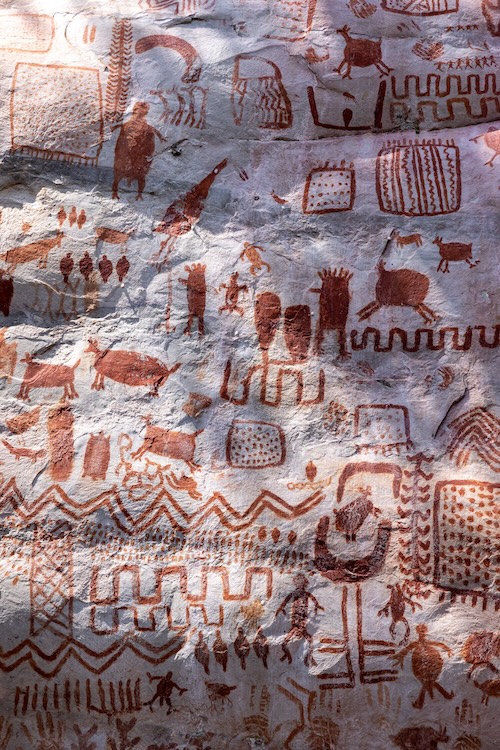Deep inside the jungles of Colombia, archeologists have discovered an extensive array of ancient rock paintings, hailed as the “Sistine Chapel of the Ancients.” These glyphs represent a significant milestone in the study of pre-Columbian history and offer a new window into the lives of people who lived during the Ice Age. This discovery, made in the Serranía de la Lindosa and nearby areas, including the Chiribiquete National Park, was led by a British-Colombian team funded by the European Research Council. The team, headed by Professor José Iriarte of Exeter University, a renowned expert in Amazonian and pre-Columbian studies, uncovered this remarkable site, revealing tens of thousands of paintings stretching across nearly eight miles of cliff faces.
 It would be hard to overestimate the significance of this discovery. The indigenous peoples who created these paintings over 12,500 years ago depict a variety of animal species, some of which are now extinct, such as the ice-age horse, characterized by its wild, heavy face and detailed enough for the artists to depict individual hairs. The sheer number of paintings – in the tens of thousands – indicates that this site was of considerable importance to the people who created these artworks. It is a treasure trove for archaeologists and historians, offering a rare glimpse into the cultural and environmental context of the era.
It would be hard to overestimate the significance of this discovery. The indigenous peoples who created these paintings over 12,500 years ago depict a variety of animal species, some of which are now extinct, such as the ice-age horse, characterized by its wild, heavy face and detailed enough for the artists to depict individual hairs. The sheer number of paintings – in the tens of thousands – indicates that this site was of considerable importance to the people who created these artworks. It is a treasure trove for archaeologists and historians, offering a rare glimpse into the cultural and environmental context of the era.
The range of subjects in the paintings is vast, encompassing fish, turtles, lizards, birds, and human figures. The human figures are particularly intriguing; they are shown dancing, holding hands, and participating in what appear to be communal activities. One striking figure is shown wearing a mask resembling a bird with a beak, hinting at the possibility of ritualistic or ceremonial practices.
The challenge for researchers now lies in recording and interpreting these paintings. As Prof. Iriarte notes, it could take generations to fully document and understand the breadth of what has been found. This task is monumental, not only because of the sheer number of paintings but also due to the difficulty in accessing some of the more remote and treacherous locations where these artworks are found. Future work will involve not only archaeologists and historians but also experts in paleoecology, anthropology, and art history.

The discovery is poised to reshape our understanding of the people who lived during the Ice Age in South America. The sophistication and naturalism of the art suggest a society with a deep understanding of their environment and a rich cultural life. It also hints at the possibility of extensive communication and cultural exchange among different groups in the region.
The Colombian government, along with international organizations, are working to ensure these paintings are preserved. This includes physical protection from the elements and potential vandalism and careful consideration of how these sites are made accessible to the public and researchers. Responsible stewardship of the site is critical to maintaining its integrity and educational value.


